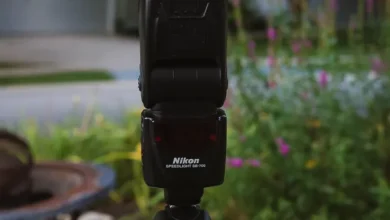
7 Common Landscape Photography Mistakes and How to Avoid Them
Landscape photography is an exciting and rewarding genre, but beginners often make certain mistakes that can hinder their progress. If you’re looking to improve your landscape photography skills, this article will highlight seven common mistakes and offer tips on how to avoid them. By paying attention to these details, you’ll be able to create more stunning, professional-looking images in no time.
1. Using the Wrong Tripod (or None at All)
While investing in expensive camera gear might seem like the way to go, a good tripod is often the unsung hero of great landscape photos. Many beginners overlook this essential tool, opting for cheap or flimsy tripods. This can lead to blurry images, especially when shooting in windy conditions or at slower shutter speeds.
A sturdy tripod is critical for keeping your camera still and ensuring sharp images, particularly in low-light situations. Additionally, make sure your tripod is tall enough to avoid uncomfortable shooting angles. If you need to shoot from low perspectives, make sure your tripod can accommodate that as well. For landscape photography, a solid and reliable tripod is an investment you’ll quickly appreciate.
2. Not Planning Your Shoot
Spontaneity can be great, but when it comes to landscape photography, preparation is key. Arriving at a beautiful location without a plan can lead to missed opportunities. You might not be able to avoid crowds or fully understand the lighting conditions at different times of the day, which could impact your shot.
Before heading out, research your location. Check online for photos from other photographers, and use tools like Google Images or social media to get an idea of how to approach the scene. Arrive early to secure a good spot, especially during peak times like sunrise or sunset. The more you plan ahead, the better your chances of getting that perfect shot.
3. Poor Lighting Choices
Lighting plays a significant role in how your landscape photo turns out. Good lighting enhances textures, creates depth, and adds mood. In landscape photography, the golden hours—just after sunrise and before sunset—provide the best lighting, with soft, warm tones that make landscapes pop.
Avoid shooting during midday when the light can be harsh and unflattering. If the weather is overcast, you may get a more diffused, even light, which can work well for certain types of landscapes. Always be mindful of how the light interacts with your scene to ensure it adds to, rather than detracts from, your composition.
4. Neglecting Composition
Composition is the backbone of any great photograph. Beginners often overlook basic composition rules, which can result in flat or uninteresting photos. Key techniques to keep in mind include leading lines, rule of thirds, and framing. Leading lines, such as a path or river, help guide the viewer’s eye to the subject, creating a sense of depth and direction.
A well-composed image draws the viewer in and keeps their attention focused on the subject. Always take a moment to step back and consider how you can arrange the elements in your frame to create a more engaging photo.
5. Crooked Horizon Lines
A tilted horizon can make an otherwise beautiful landscape photo look unprofessional and distracting. It’s an easy mistake to make, especially when you’re focusing on capturing a dynamic scene. However, a crooked horizon can undermine the sense of stability in your composition.
To avoid this, ensure your camera is level when taking the shot. Most cameras have built-in grid lines or a virtual horizon in live view to help you keep things aligned. If you do end up with a crooked horizon, don’t worry—it’s easy to fix in post-processing, but it’s best to get it right in the field.
6. Unwanted Elements at the Edges of the Frame
Sometimes, the main subject of your photo is perfect, but unwanted elements like tree branches, rocks, or power lines creep into the edges of your frame, distracting from the main focus. These distractions can detract from your overall composition and weaken your image.
To prevent this, always check the edges of your frame before pressing the shutter. If you notice any distractions, adjust your camera angle, crop in closer, or change your position. A little attention to detail can make a significant difference in the quality of your shot.
7. No Clear Subject
One of the most common mistakes beginner photographers make is failing to define a clear subject in their landscape photos. Without a main focal point, your image can end up looking like a snapshot rather than a carefully composed photograph.
Before you shoot, ask yourself: what is the subject of the scene, and why are you drawn to it? Whether it’s a mountain peak, a tree, or a distant cityscape, having a clear subject will help guide the viewer’s eye and give your photo a sense of purpose. Keep your focus on what makes the scene special and frame it in a way that highlights its importance.
Conclusion
Landscape photography can be incredibly rewarding, but avoiding these common mistakes will help you take your photos to the next level. By ensuring that your tripod is stable, planning your shoots, paying attention to lighting, composing carefully, and eliminating distractions, you can instantly improve the quality of your images. Take the time to consider your surroundings, and always remember to focus on your main subject to create more compelling, professional-looking photos.




